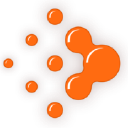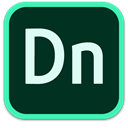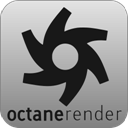Uncovering the Best V-Ray Alternatives for 3D Rendering
V-Ray 2.0 for 3ds Max has long been a powerhouse in the 3D rendering world, renowned for its award-winning production rendering engine and exceptional speed. Its ability to handle demanding rendering needs, especially for stereoscopic content, is impressive. However, for various reasons—be it cost, specific features, or platform compatibility—many professionals and enthusiasts are constantly on the lookout for a robust V-Ray alternative. This article delves into some of the top contenders that offer compelling rendering solutions.
Top V-Ray Alternatives
Whether you're seeking a free, open-source solution, a specialized tool for specific workflows, or simply a different approach to physically-based rendering, there's a V-Ray alternative out there for you. Here are some of the most notable options:

LuxCoreRender
LuxCoreRender is a physically based and unbiased rendering engine that stands out as an excellent free and open-source V-Ray alternative. Available on Mac, Windows, and Linux, it simulates the flow of light according to physical laws, offering high-quality results without a price tag.

Keyshot
KeyShot is a popular commercial V-Ray alternative developed by Luxion, available for both PC and Mac. It simplifies the process of creating photographic renderings with its interactive raytracing and global illumination features, making it a strong choice for those prioritizing speed and ease of use, including a dedicated 'Studio' feature for enhanced workflow.

appleseed
appleseed is a modern, open-source, physically-based rendering engine designed for photorealistic images, animations, and visual effects. As a free V-Ray alternative for Mac, Windows, and Linux, its portability makes it a flexible option for various production pipelines.

Mitsuba
Mitsuba is a free and extensible rendering framework written in portable C++, making it a versatile V-Ray alternative for Mac, Windows, and Linux. It implements both unbiased and biased techniques, providing a robust platform for advanced rendering research and production.

RenderMan
PhotoRealistic RenderMan (PRMan) from Pixar is a proprietary, yet free for personal use, V-Ray alternative that utilizes the REYES algorithm and offers full ray tracing capabilities. Available on Mac, Windows, and Linux, it's a powerful 3D renderer known for producing high-resolution images, favored by many in the professional animation industry.

Adobe Dimension
Adobe Dimension is a commercial V-Ray alternative that simplifies 3D rendering for graphic designers. Part of the Adobe Creative Cloud, it's available on Mac and Windows and is specifically designed to create high-quality, photorealistic images, offering features like 3D modeling and HD-Rendering.

Kerkythea
Kerkythea is a powerful, free, and feature-rich standalone raytracing renderer. As a V-Ray alternative for Mac, Windows, and Linux, it also provides exporters for Blender and Google SketchUp, making it a flexible option for users of these popular 3D tools, and supports network rendering.

Sunflow Rendering System
Sunflow Rendering System is an open-source rendering system for photo-realistic image synthesis, making it a free V-Ray alternative for Mac, Windows, and Linux. Written in Java, it features a flexible ray tracing core and an extensible architecture, ideal for those who prefer Java-based solutions.

Octane Render
Octane Render is a commercial, GPU-based, unbiased, physically-based renderer, offering a significant performance boost for many users and acting as a compelling V-Ray alternative. Available on Mac, Windows, and Linux, its reliance on the graphics card for rendering delivers exceptional speed and quality.
The world of 3D rendering is diverse, and while V-Ray is a top-tier solution, these V-Ray alternatives demonstrate that there are many powerful and capable rendering engines available. Whether your priority is cost-effectiveness, open-source flexibility, specific feature sets, or GPU acceleration, exploring these options will help you find the best fit for your unique rendering needs and workflow.